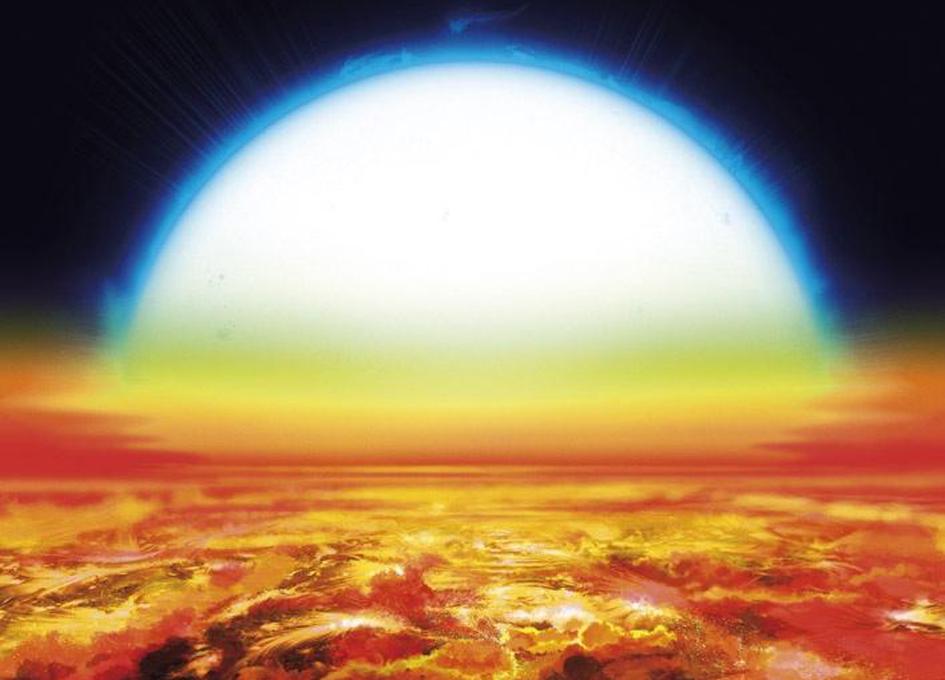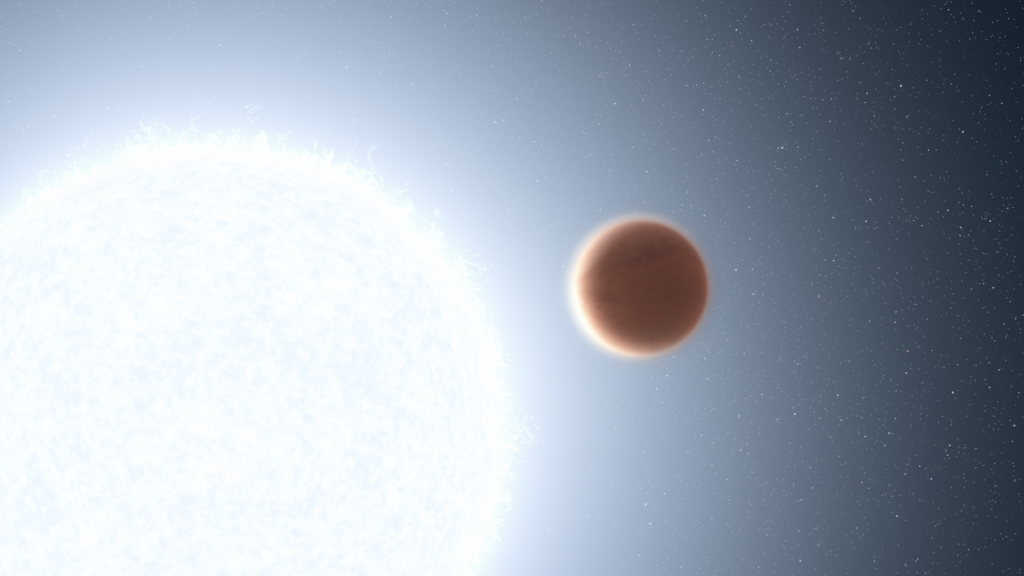Using data collected by the Hubble Space Telescope, astronomers have studied weather processes on extreme exoplanets known as ultra-hot Jupiters. The results of the study were published in recent issues of the journals Nature and Astrophysical Journal Letters.
Ultra-hot Jupiters are called gas giants whose orbits take place at very small distances from the parent stars. Because of this, their atmospheres are heated to extreme temperatures exceeding the melting point of titanium.
WASP-178b: Planet with hurricane winds and stone rains
One such world is the exoplanet WASP-178b, located 1300 light-years from Earth. Its orbit passes at a distance of about 7.5 million km from the star, the temperature of the illuminated side is estimated at about 2200 °C.

Since WASP-178b is constantly facing its star with the same hemisphere, this leads to significant temperature differences. Hubble data suggests that its daytime side is cloudless, but at the same time contains a large amount of silicon monoxide (SiO).
The difference in the temperature of the atmosphere creates powerful winds that move to the night side of the planet at a speed of over 3000 km/h. There, SiO cools down, condenses and falls on the surface of the planet like a stone rain. At the same time, even there, the temperature of the atmosphere is high enough to evaporate the rocks and return silicon monoxide to the atmosphere.
KELT-20b: Planet with an analog of the Earth’s stratosphere
Another goal of the researchers was the hot Jupiter KELT-20b, located 400 light-years from Earth. Its orbit passes at a distance of 7 million km from the star, the temperature of the daytime hemisphere is almost 2000 °C.

Astronomers were able to detect signs that the atmosphere of KELT-20b has a hot high-altitude layer, which is an analogue of the earth’s stratosphere. On our planet, this is due to the ultraviolet-absorbing ozone layer, which leads to heating of the atmosphere in the altitude range from 10 to 50 km. On the KELT-20b, a similar function is performed by metal pairs, which create a very powerful inversion layer. With increasing altitude, the atmosphere of the exoplanet initially becomes colder, but then its sharp heating occurs.
Although according to modern ideas there can be no life on ultra-hot Jupiters, the study of their atmospheres plays an important role. It helps astronomers to better understand the atmospheric processes occurring on extrasolar worlds, and to work out research methods that will be useful in the future when observing Earth-like exoplanets.
According to ttps://www.nasa.gov
Follow us on Twitter to get the most interesting space news in time
https://twitter.com/ust_magazine
